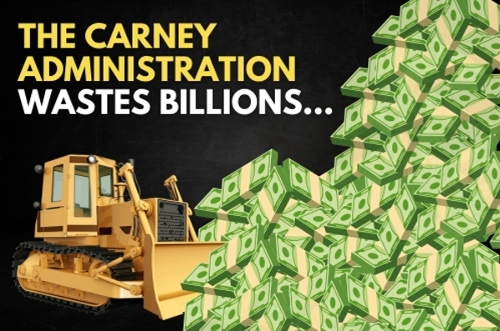
The Eight-Year Priorities of the Carney Administration
By Charlie Copeland
Center for Economic & Fiscal Policy
August 9, 2024
"When somebody says it's not about the money, it's about the money."
- H.L. Mencken
Politicians give many speeches and say many different things. They usually want to pander to the listening audience, whether a room full of partisans or a one-to-one conversation with a voter. But what they cannot obfuscate is where they spend the money. That is where voters can see their true priorities.
This article will not cover the historic overall spending growth of the last four years. For more information on that topic, please refer to my report, "The Pending Budget Crisis in Delaware-Get Candidates on Record." Instead, this article will focus on examining the state government's spending priorities during the Carney Administration, particularly by reviewing the areas of investment or lack thereof.
To get right to the punch line, state spending has increased by 45% in the last eight years (a historic increase going back at least 60 years). Education, healthcare, and the executive office saw enormous increases, while technology remains a laggard. Despite spending growth, education achievement levels reached decadal lows; the state admits that Medicaid fraud will likely spike, and other state agencies continue to grow bureaucrats. What will be the next Governor's priorities?
Note: The state spending numbers in this article come from the 2016-2017 and 2024-2025 State Budget.
Education Spending Wins Big - Education Outcomes Collapse
In 2016, Delaware's public schools had 137,217 students, and state spending on Public Education was $1.38B. By 2024, that number had risen to 142,157 students, and state spending on Public Education rose to $2.16B.
Quick math shows that during the Carney administration, the number of public school students increased by a mere 3.6%, but spending increased by 56.2%! State spending per student went from $10,091 to $15,216-an increase of over 50%.
Despite the historic increase in state spending, educational outcomes dropped catastrophically. Delaware was the worst-performing state in the nation during COVID-19 and now ranks in the bottom five in educational outcomes. Tanya Hettler, PhD of CRI's Center for Education Policy, has documented this extensively. Dr. Hettler's reports are available on CRI's website.
Note: 1.) The state is considering throwing another $1B into education for "equity," and 2.) The education spending numbers mentioned do NOT include local district spending.
Delaware Health and Social Services (DHSS) Gains - As Does Potential Fraud
During the Carney era, DHSS spending grew by $778.4M, or 35.1%, to almost $1.8B. Some of this spending increase could be blamed on COVID-19, but that doesn't explain all of it. Medicaid costs (a subset of DHSS spending) grew at 28.9% -- large, to be sure, but not the main driver.
Comparing the two budget years, the department has grown its headcount by 284 people, but more critically, multiple divisions and offices were reallocated in the budget, making one-to-one comparisons difficult.
In short, DHSS is a behemoth agency incorporating Medicaid, Public Health, Animal Welfare, Substance Abuse, Temporary Assistance for Needy Families, Visually Impaired, etc. Given the wide assortment of services, needs, and structures, it is easy to expect that the bureaucracy associated with DHSS continues to grow with few efficiency gains implemented. This is the most likely reason for the outsized cost increases.
A significant concern is fraud. DHSS itself expects 40,000 to 60,000 Medicaid recipients will lose their coverage now that COVID-19 has receded, creating an opportunity for large-scale scams. In addition, the Attorney General sought to pause opioid grants due to fraud concerns, but DHSS ignored her concerns and issued $45M in grants anyway.
Technology is a BIG LOSER
In state government, you can forget about technological innovation. Neither Zoom nor AI exist in the "government world." Spending in the Delaware Department of Technology & Information (DTI) accounts for just over $106M, or only 1.3% of the budget. By comparison, the department called "Executive," a random assortment of offices that should be put into other departments (e.g., Criminal Justice Council, Housing, Statistical Analysis, etc.), grew 105.5% to $588.5M, accounting for 13.3% of state spending-a lot of money with lax of oversight for dozens of miscellaneous agencies.
State government could use a specific effort to bring automation and more efficient service delivery via computer technology.
Recommendation
Delaware state government needs to improve efficiency. With the excess billions of dollars coming in from COVID-19 and many administration leadership roles staffed by the same people for over a decade, the state is sloppy and expensive.
CRI recommends that Delawareans ask all the gubernatorial candidates how they expect to handle making government work more efficiently.